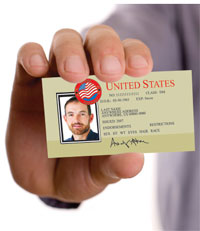M2SYS, a biometric technology research and development firm, recently released Bio-AI. The artificial intelligence enhancement uses a unique "dynamic profiling" technique to learn about a person's fingerprints over time.
Although integrated smart cards and biometrics technology is only at an early growth phase, the stage is being set for its exceptional growth. New analysis from Frost & Sullivan APAC Integrated Smart Cards and Biometrics Markets, finds that the market earned $249.1 million in 2007 and is expected to reach $822.2 million by 2013.
Siber Systems Inc. recently announced the results of a poll on password use involving more than 600 U.S. IT professionals. The survey, administered through business data company eMedia, found that U.S. workers, managers and IT staffs alike are increasingly confronted with difficulties arising from computer passwords.
Quest Software Inc. recently announced the results of its Identity Management Government Survey of federal, state, local and municipal government IT professionals.
BIO-key International Inc. recently announced that the Indiana Blood Center is deploying BIO-key's WEB-key biometric identification technology to enhance the convenience and security of identifying blood donors.
HID Global recently announced that it has joined forces with the ASSA ABLOY Identification Technologies (ITG).

You’ve all seen that guy in the hallway: that unfamiliar face. “He must be the new guy.” “He must be here for a meeting.” “Isn’t he Jane’s husband?” “He probably works for facility management.” In too many cases, employee simply do not know who or why that person is wandering around the premises

In the United States, people encounter a perpetual tradeoff between freedom and security. The nation depends on a complex system of critical infrastructures to maintain a high quality of life and the freedoms enjoyed every day. New threats to security have these organizations taking a second look at their vulnerabilities, however, scrambling to minimize disruption and to maintain the integrity of their operations. In the past, national security was perceived as the role of government. Today, Department of Homeland Security efforts to protect critical infrastructures from physical attack are a shared responsibility of the public and private sectors, as well as individual citizens.

Administrators at Haltom High School in Haltom City, Texas, wanted their school’s ID cards to be useful, but never did they imagine the cards would help thwart a drug dealer. “We have used student and faculty ID cards for the last decade,” said Rick Mauderer, associate principal at Haltom High School and the person responsible for the school’s ID program. “As a high school of more than 2,600 students, there is no way we can know who every student is, especially with substitute teachers in the building.
- By Sharon Steinhoff-Smith
- Dec 04, 2007